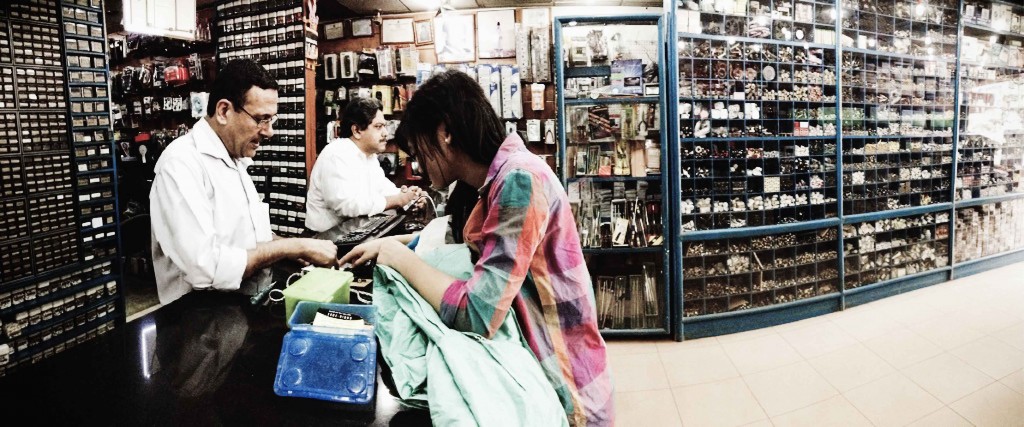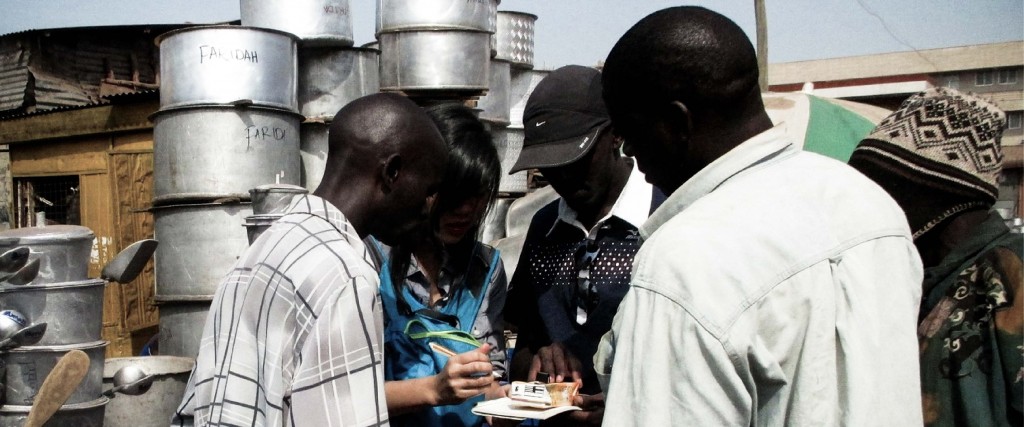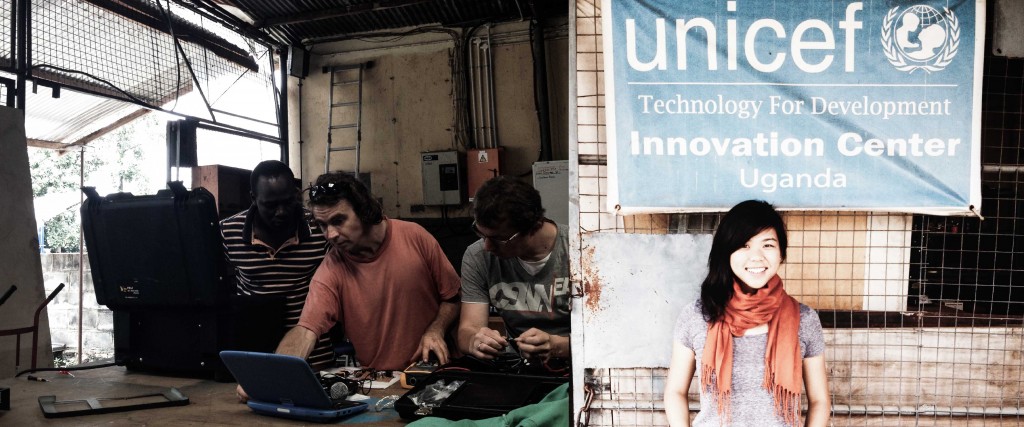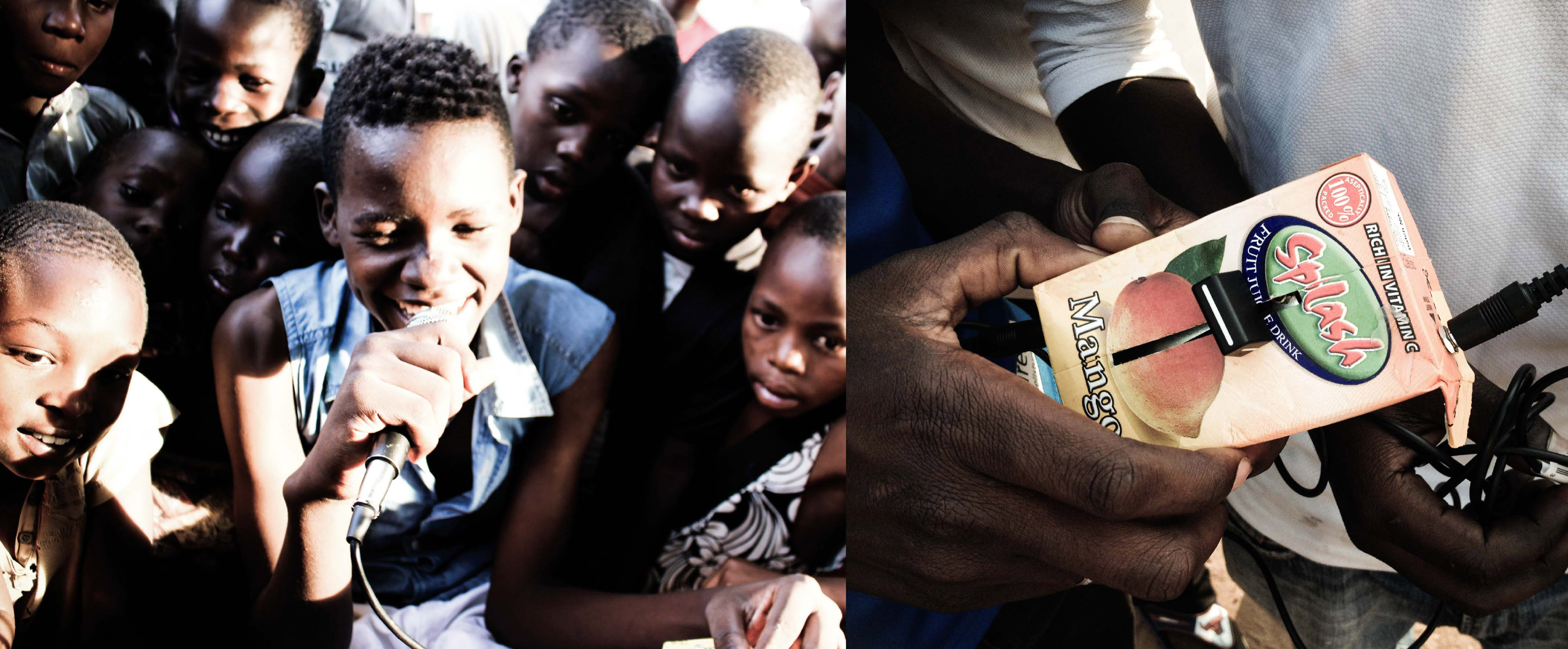Tina L. Zeng (Media Design Practices ’14) reflects on her graduate studies and her award winning weDub project. The weDub Project is a locally developed DIY audio mixer and preamplifier that fits in the palm of your hand. Created in the urban slum of Kamwokya in Uganda, the circuit is made by youths to perform live improvisations of reinterpreted media to a participatory audience.
Inbox: Reflections on ArtCenter
Re: An update on The weDub Project

It’s been nearly two years since I was in the field working and designing in Kampala as a graduate student building The weDub Project. Not a day goes by where I have not used or called upon what I’ve learned from that experience.
Since I left Kampala in 2014, I have devoted a part of my practice to keep telling the story of what happened at Treasure Life Youth Center (TLC) and what the youths and I made together in the slum area of Kamwokya. This year, I will be speaking at Open Engagement in Oakland, CA among a few other events, and writing a few pieces here and there to be published.
I’ve gotten inquiries on whether or not I will be continuing the project in the sense of whether I will keep iterating on the electronic circuit or go back to Kampala. The truth is, the project itself lives on in Kamwokya and with the youths. Design was merely the way in which we built an experience with the community—the youths and their talents are at the heart of this.
I’ve since made it my responsibility to take the youth’s story out of Uganda and into the United States. The project’s social impact on design here is a story worth telling and something I intend to keep working on.

Consulting shop manager, Sherali Bhiwani’s expertise at Modern Electronics, the local electronics store in downtown Kampala. This is where I sourced all the components to make the circuit for the project and where I would sometimes test the circuit with large subwoofers that would boom into the streets.
Cc: Media Design Practices/Field + UNICEF + Designmatters
The weDub Project was successful in part by the strong partnerships between the Media Design Practices/Field program (MDP), UNICEF Innovation Lab, and Designmatters. I was able to explore the freedoms of creating a project from the ground up, learn to craft my own design briefs (there wasn’t an initial design prompt), and develop relationships with people local to Kampala and with partner organizations. The unwavering support of these institutions created a framework within which I was able to cultivate engagements that would allow me to explore what made me curious.
Arriving in Kampala without a design brief and without project partners meant that the onus was on me to define an opportunity space and develop relationships that would contribute to the project’s development. The engagement with UNICEF was also up to me to create, define, and develop.
There came a point in the development of The weDub Project where I felt that developing a relationship and exposing the project to the perspectives at the Innovation Labs was beneficial to both my work and the work at the Lab in Kampala. I wrote a project proposal and MDP, Designmatters, and UNICEF Innovation Unit/Labs came together to support me and I returned to Uganda for a third time. I formally consulted for the Lab and continued to work on my thesis in tandem for two weeks. Students of MDP/Field are normally scheduled to two trips to Uganda as the program standard.
These strong partnerships also set me up for learning beyond the classroom. By classroom, I mean that the classroom was never a physical classroom and that it changed constantly. One moment I’m at the electronics shop in town testing a circuit iteration with Sherali, the manager, who is an Indian electronics wizard, next I’m in what is supposed to be an eight person van but becomes a twelve person minibus and there is a woman half sitting on my lap but this how Ugandans get to where they need to go so I’m on the minibus, or I’m presenting a Keynote to the all-male team of European engineers at UNICEF Innovation Lab.

On the ground researching and prototyping at Katwe Market, a local market known for African craftsman ingenuity. I’m with Pius (next to me on the right), one of the youths from Treasure Life Youth Center (TLC) who helped build the project and whom I worked very closely with.
Sometimes this all happens on the same day. There is nothing else like it.
Other times, there are logistical challenges that hinder your productivity or experiences that turn your world view upside down. For example, the whole city stops when it rains in the middle of the day—no one has an umbrella to carry on with their day. When you are in a country for weeks at a time and there are project deadlines, a few hours lost can be devastating.
Or, you’re in the middle of a tech workshop and the electricity goes out in the entire slum for an indefinite time. Or, you are held by the police in town and a negotiation begins to play out in ways that reframes your perception of entitlement and citizenship.
The stakes are real when working with people and navigating a city and culture that you are foreign to. Relationships matter.
An education from ArtCenter forced me to redefine what it means to be a designer. It is not only about a level of craft in the making process, but also about being able to handle (sometimes volatile) situations and human relationships with a degree of aplomb.
It is through ArtCenter’s strong partnerships that I’m able to reach beyond just designing behind a computer screen. After graduation, I was honored as the Media Design Practices/Field post- graduate fellow and Chris Fabian, co-lead of the UNICEF Innovation Unit invited me to spend a few weeks working with the talented design team in the New York headquarters. At ArtCenter, the educational experience is one’s own and it doesn’t stop at the classroom or in the studio.

On the ground researching and prototyping at Katwe Market, a local market known for African craftsman ingenuity. I’m with Pius (next to me on the right), one of the youths from Treasure Life Youth Center (TLC) who helped build the project and whom I worked very closely with.
Forward > IBM Design
When I decided to join MDP, I was a part of the second cohort in MDP’s Field Track. It was a brand new program and a huge risk. I was scared. I’ve always felt that if it doesn’t scare you, it isn’t a big enough challenge.
Fear can help identify amazing growth opportunities. That has always been my north star. In the same spirit that I chose MDP/Field, I chose IBM Design.
It’s an exciting time to be at IBM— to be at a company that is working towards building a sustainable design culture at scale. At IBM Design, I’m learning how to be design’s best advocate and to stand by what my team and I make— to design with conviction. I’m excited to work and learn with such talented designers and to be a part of something bigger.
While my time at IBM is just beginning, I’m confident that the opportunity to work in a multi- disciplinary team will place my design practice and view of design constantly into the kiln. If you apply enough constant pressure—the good kind— what comes out of the kiln is better than what it was before the fire.
________
Tina L. Zeng is a designer working at the intersection of user experience, technology, and social action.
She is based out of San Francisco and currently works at IBM Design. Tina graduated from Media Design Practices/Field (MDP ’14) and was honored as the Post-Graduate Fellow. When asked ‘would you like a side of fries with that’ the answer is always yes.
Help us celebrate 15 Years of Designmatters by using the hashtag #DM15Yrs
Catch up on the entire campaign at designmattersatartcenter.org/category/dm15
For the latest Designmatters news follow us on Twitter and IG @DesignmattersCA

#DM15yrs campaign designed by Vina Rostomyan
